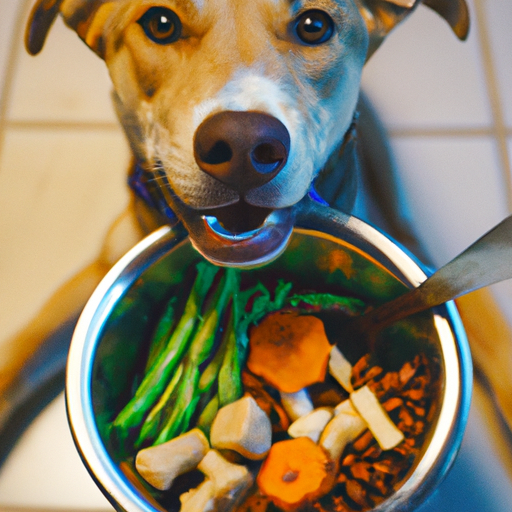As a caregiver, you know the importance of a well-balanced diet for your beloved four-legged friend. You’re always looking for ways to enhance their diet, to ensure they live a long, healthy, and happy life. Today, we’re going to discuss a key dietary component that is often overlooked – fiber.
What is Fiber and Why is it Important?
Fiber is an essential part of your dog’s diet. It aids in digestion, helps maintain a healthy weight, and can even contribute to reducing the risk of certain health problems like diabetes and heart disease. But, do you know how to add fiber to your dog’s diet naturally? Here are some strategies.
1. Introduce High-Fiber Fruits and Vegetables
Many fruits and vegetables are high in fiber and can be easily integrated into your dog’s diet. Here are a few examples:
-
Apples: High in fiber and low in fat, they’re a great snack for your dog. Just remember to remove the seeds and core.
-
Pumpkin: This superfood is packed with fiber and vitamins. It’s also great for dogs with digestive issues.
-
Carrots: Crunchy and delicious, carrots are high in fiber and vitamin A.
-
Green beans: Low in calories and high in fiber, green beans are a great addition to your dog’s diet.
Remember, it’s important to introduce these foods gradually to avoid upsetting your dog’s stomach.
2. Incorporate Whole Grains
Whole grains are another excellent source of dietary fiber. Consider adding foods like brown rice, barley, and oatmeal to your dog’s meals. Here’s a quick comparison of these grains:
| Whole Grain | Fiber Content |
|---|---|
| Brown Rice | 3.5g per cup |
| Barley | 6g per cup |
| Oatmeal | 4g per cup |
3. Use Fiber Supplements
If your dog is having trouble getting enough fiber from their diet, you might want to consider a fiber supplement. There are many natural options available, such as psyllium husk and flaxseed. Always consult with your vet before starting any new supplement regimen.
4. Opt for High-Fiber Dog Foods
Many commercial dog foods are formulated with high fiber content. These can be a good option if your dog isn’t a fan of fruits, vegetables, or whole grains. Just be sure to read the label carefully to ensure you’re choosing a high-quality product.
5. Consult with a Veterinarian
Before making any major changes to your dog’s diet, it’s always best to consult with a veterinarian. They can provide specific recommendations based on your dog’s age, breed, and health status, ensuring a balanced and nutritious diet.
Frequently Asked Questions
Q: Can too much fiber be harmful to my dog?
A: Yes, excessive fiber can lead to digestive issues such as bloating and gas. Always introduce new foods gradually and monitor your dog’s reaction.
Q: Can all dogs eat fruits and vegetables?
A: Most dogs can eat fruits and vegetables, but some may have allergies or sensitivities. Always introduce new foods slowly and watch for any adverse reactions.
Q: How much fiber should my dog have each day?
A: The amount of fiber a dog needs can vary based on their size, age, and health status. Consult with a vet for specific recommendations.
Remember, you know your dog better than anyone else. By taking a careful and considered approach to their diet, you can ensure they get the fiber they need to stay happy and healthy.



